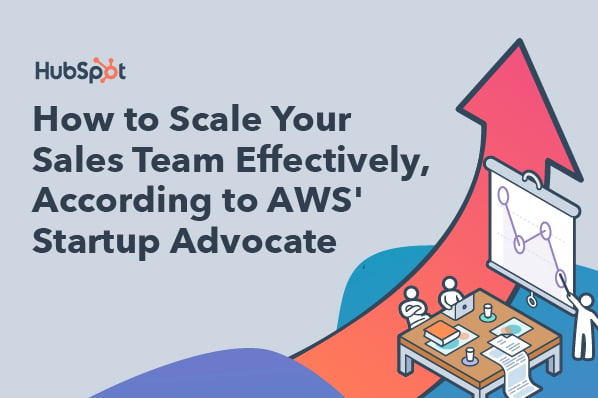So, are the lines really blurred? Is inside sales just sales as usual? Wondering which go-to-market should you choose? I believe both can be essential components of a well-rounded sales plan.
Let's explore the inside sales vs. outside sales equation and study how each fits into modern sales teams.
Table of Contents
- What Is Inside Sales?
- Inside Sales vs. Outside Sales
- The Benefits of Inside Sales
- What Do Inside Sales Reps Do?
- Inside Sales Team
- Inside Sales vs. Outside Sales Salary
- Inside Sales vs. Outside Sales Quota Attainment
- Inside vs. Outside Sales Models
- A Balanced Sales Model Is Key
According to much-cited U.S. Census data, out of the 5.7 million professional salespeople in the U.S., approximately 45.5% are inside sales professionals. Outside sales reps represent 52.8%.
The Benefits of Inside Sales
The popularity of digital channels has made it more common for consumers to do online research on goods and services and communicate with sales representatives instead of meeting in person. In fact, a Gartner study has revealed that CSOs anticipate that 60% of the sales staff will continue to work virtually.
So let’s explore how else an inside sales model can benefit you apart from meeting customer demands.
Wider Reach of Customers
Inside sales teams can establish connections with a large number of prospects in a shorter amount of time. Hubspot’s 2024 sales report found that compared to in-person sales, 21% of sales representatives believe that remote sales are somewhat more successful.
Inside sales professionals can effectively manage and follow up on several leads at once by using tools such as CRM platforms, email automation, sales automation tools, and phones. They can easily connect with many prospects and customers through technology, regardless of where they are or what time it is.
More Affordable
Generally speaking, inside sales have lower costs than outside sales. When travel, lodging, and other associated expenses are eliminated, inside sales operations can become more cost-effective.
Inside sales teams can also contact many prospects at a fraction of the cost of typical outside sales with newer technology and methods. This enables companies to retain high levels of productivity and efficiency while saving money on overhead expenses.
Adaptable and Saves Time
Thanks to inside sales, businesses can swiftly adjust to shifting business requirements. When inside sales teams have the proper resources and tactics in place, they can interact with potential customers in a timely and personalized way and give them the information needed to make good purchasing decisions.
This results in increased revenue, quicker sales cycles, and higher conversion rates. Hubspot’s recent sales report also found out that more than a quarter (28%) of sales professionals believe that a lengthy sales process contributes to most prospects backing out of deals. Moreover, I’ve experienced that you can avoid the logistical difficulties involved with outside sales, allowing teams to be scaled up or down in response to demand and real-time adjustments to sales plans.
Even Chase McKee, founder and CEO at Rocket Alumni Solutions, mentions that they’ve used inside-sales strategies to efficiently expand their client base to over 500 schools without the overhead and complexity of an external sales force. This approach not only streamlined their operations but also contributed to a 50% boost in conversion rates.
So, an inside sales model can help a lot when fulfilling your company goals. I’d suggest you look at which strategy you want to implement based on what you want to achieve.
What Do Inside Sales Reps Do?
Inside sales reps work remotely with their potential customers to guide them through the sales process, ensuring they find an adequate product or service that helps the customer solve their problem.
What are inside sales activities?
Key responsibilities of an inside sales rep include:
- Demonstrating superior product knowledge to answer customer questions and inquiries.
- Building relationships with potential customers to establish trust and rapport.
- Nurture leads with the goal of converting them to customers.
- Managing referrals from existing customers.
- Reaching their monthly quota goals.
- Closing customer deals.
- Reporting on relevant sales data.
Since inside sales reps typically don't meet with prospects face-to-face, they leverage tools like phones, email, video, and virtual meetings to connect with potential customers.
Their schedule is more predictable, and they often have a target for the number of activities they accomplish each day (e.g., number of calls, meetings booked, proposals sent).
Pro tip: If you‘re interested in becoming an inside sales rep, you’ll need to have a deep understanding of your product. Unlike an outside sales rep who can give an in-person demo, inside sales reps need to have the ability to explain the functionality and value of their product to customers during a cold call, if need be.
Another perk of inside sales is that it's a better fit for salespeople or teams functioning remotely.
What do outside sales reps do?
Outside sales reps spend most of their time traveling to meet with clients, connect with prospects, and nurture relationships.
The 2021 Xant.ai report found that outside teams engage in 25% more calls and over 50% more email activities.
They often sell at industry events, conferences, or speaking engagements. This type of sales position is a good fit for those who like to manage their own schedules and work independently.
However, the tools that inside and outside sellers use are so similar — CRMs, email, social media — there‘s really no more inside versus outside sales anymore. It’s all sales.
Inside Sales Team
To create an inside sales team, there are key roles you’ll need:
- Sales development representative (SDR). Qualifies the lead.
- Account executive (AE). Closes deals.
- Account manager. Manages customer relationships.
- Customer success manager. Oversees customer support.
Pro tip: The rule of thumb when it comes to your sales team is to have one SDR for every two to three AEs.
Should you outsource your inside sales team?
To decide the best setup for your company, you’ll have to do an evaluation of where your company currently stands.
If you’re a startup or a small business, you may want to outsource your inside sales team and keep your overhead costs down. If you’re a larger company, however, having an in-house team may be a better investment.
Now, let’s say your sales team is currently focused on acquiring new leads instead of closing deals. Sales reps spend a lot of time connecting with prospecting, nurturing relationships, and qualifying leads.
I would advise you to think about outsourcing an inside sales team and having your in-house team focus on leads that are already qualified and purchase-ready.
McKee agrees that outsourcing sales allows for geographic expansion with consistent brand messaging sharing that, “When we partnered with an educational tech provider, strategic negotiation and inside-sales support secured a deal 40% above the initial offer, demonstrating financial gains and improved credibility.”
While there are many upsides to outsourcing, you can see that it’s only effective with the right vendor. You’ll want a vendor that has a clear understanding of your brand, product, and messaging.
Your vendor should also be transparent about:
- Their sales process.
- What they’ll deliver (pipeline building, number of qualified leads a month, etc.).
- Progress reports.
Inside Sales vs. Outside Sales Salary
To retain top talent, companies need to pay market value for salespeople.
- Glassdoor reports that the median salary for an inside sales rep in the U.S. in 2024 is $82K.
- For a sales development rep (SDR), the median salary is $79K.
- For an inside sales account executive (AE), the median salary sits at $96K.
Often, sales leaders believe outside reps bring more experience to a role, so they demand a higher base salary.
According to our data, companies that had the majority of outside sales reps had a base salary that was 36% higher than inside sales. Interestingly, the OTE for outside sales was only 9.2% higher.
OTE should be an indicator of expected earnings, so inside sales positions actually earn relatively close to the same amount as outside sales.
Inside Sales vs. Outside Sales Quota Attainment
According to the 2024 B2B Sales Benchmark Report from EBSTA and Pavilion Found, 70% of sales reps missed quota in 2024. Interestingly, outside sales reps have a 10% higher quota on average than inside sales reps, according to Spotio.
While salespeople are sometimes assigned territories based on specific roles (inside/outside), companies often allow inside sellers to close smaller value deals on their own — and support the outside seller when working on key strategic accounts.
Inside vs. Outside Sales Models
Here’s a breakdown that will help you visualize the structure of an inside versus outside sales team.
Inside Sales Model
- Sales rep connects with prospects, leads, and clients using digital channels.
- Focuses on acquiring leads.
- Faster sales cycle (<90 days).
- Costs less and is more scalable.
Outside Sales Model
- Sales rep travels to meet clients face-to-face.
- Focuses on nurturing and converting leads.
- Slower sales cycles (>90 days).
- Costs more and is less scalable.
Finally, when choosing a sales organizational structure, you'll always be at the whim of your customer. How do your customers prefer to be contacted? How do they allow you to close a deal? Can you close a $1M deal over the phone? Only your customer can decide that — but you still have to train your salespeople effectively.
Pro tip: This sales training plan can help!
A Balanced Sales Model Is Key
I don‘t believe there’s a specific vertical, industry, or product where a field sales model is indispensable. Sure, there are industries that have a field sales model. But, this doesn‘t mean it’s the optimal sales model in the current market.
The buyer of today is becoming more digitally savvy. As they‘re purchasing more goods for personal use on Amazon and other websites, they’ll naturally expect this model to work seamlessly in the B2B environment as well. You must be ready to meet them with a solid digital sales model — and this means including inside sellers on your team.
There really is no manual when it comes to inside and outside sales. Over the years, I’ve observed that companies are trying different models and testing various organizational structures to make sure they find the right fit for their product, buyer, and market.
What I’ve experienced going through this debate myself is that there’s no one-size-fits-all strategy you can implement. With the evolving digital landscape, you’ll have to find a balance between the two.
Editor's Note: This post was originally published in April 2020 and has been updated for comprehensiveness.
Sales Operations


.png)


.png)

![A Look at Sales Budgets & the 7 Steps to Creating One [+ Templates]](https://53.fs1.hubspotusercontent-na1.net/hubfs/53/Sales%20Budget%20(1).jpg)


.jpg)


